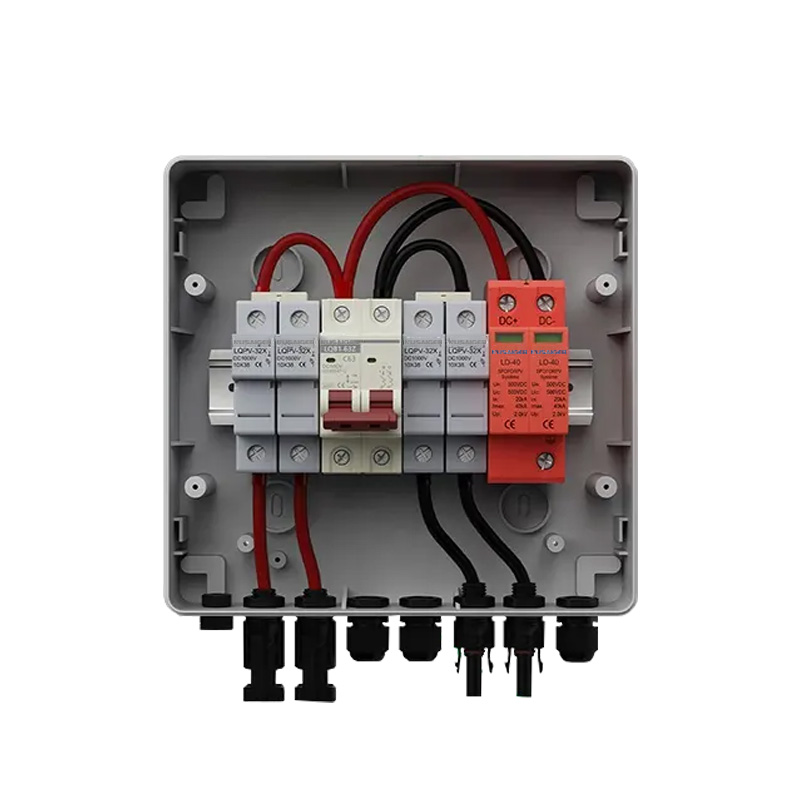Choosing Between Smart and Conventional PV Combiner Boxes: A Practical Comparison
The growing adoption of photovoltaic (PV) systems has sparked the development of increasingly advanced electrical components. One of the most critical components in a solar power system—the PV combiner box—has evolved from a passive junction box to a data-rich smart monitoring device. This transformation has created two major categories: smart PV combiner boxes and conventional (or standard) combiner boxes.
This article offers a comprehensive, side-by-side comparison of smart and traditional PV combiner boxes. Whether you are designing a residential rooftop, a commercial installation, or a utility-scale solar farm, understanding the differences can help optimize your system’s performance and return on investment.
1. What Is a PV Combiner Box?
A PV combiner box connects multiple strings of solar panels and combines their DC outputs into a single feed for the inverter. It also houses critical protective devices such as fuses, surge protection devices (SPDs), disconnect switches, and grounding terminals.
2. What Is a Smart PV Combiner Box?
Unlike traditional units, a smart PV combiner box includes electronic components that allow real-time data collection, performance tracking, and even automated alerts. It essentially integrates a miniature data acquisition system into the combiner box.
3. Key Differences Between Smart and Traditional Combiner Boxes
| Feature | Smart Combiner Box | Traditional Combiner Box |
|---|---|---|
| Monitoring | String-level current/voltage, real-time diagnostics | Manual inspection only |
| Data Interface | Modbus, RS485, Ethernet | None |
| Surge Protection | Advanced SPD with status indicators | Basic SPD |
| Maintenance | Proactive, condition-based | Reactive, time-based |
| Cost | Higher initial cost, lower O&M | Lower initial cost, higher long-term O&M |
4. Use Case Comparison
4.1 Residential Rooftop Systems
For small-scale installations with 1–4 strings, traditional combiner boxes are often sufficient. The simplicity and low cost make them ideal for residential use where monitoring is not mission-critical.
4.2 Commercial Systems
Medium-scale systems benefit from smart combiner boxes for their ability to provide real-time fault detection and performance monitoring, helping to reduce unexpected downtime.
4.3 Utility-Scale Projects
Large projects with 100kW+ capacities require advanced diagnostics, making smart combiner boxes indispensable. Integration with SCADA systems and predictive maintenance strategies is crucial at this scale.
5. Advantages of Smart Combiner Boxes
- Early fault detection through string-level monitoring
- Improved energy yield via real-time performance optimization
- Remote access for O&M teams
- Reduced troubleshooting time and field visits
- Data collection for warranty and performance analysis
6. When to Use Traditional Combiner Boxes
- When budget constraints are strict and system size is small
- In systems with minimal string diversity or shading risks
- Where remote monitoring is not required
- When local maintenance staff are readily available
7. Cost-Benefit Analysis
Although smart PV combiner boxes cost 30–50% more initially, the operational benefits can lead to total cost savings over the system’s lifetime. Reduced maintenance labor, higher uptime, and automated alerts all contribute to a quicker return on investment (ROI), especially for large commercial systems.
8. Common Features in Smart Combiner Boxes
- Integrated string monitoring (0–20A sensors)
- Voltage imbalance alerts
- SPD health diagnostics
- Internal temperature tracking
- Firmware-upgradeable controllers
- RS485 or Ethernet communication protocols
9. Compliance and Certifications
Smart and conventional combiner boxes must meet the same safety and compliance standards, such as:
- UL 1741 (U.S.)
- IEC 61439 (International)
- NEC Article 690
- IP65/NEMA 4X enclosure standards for outdoor use
10. Frequently Asked Questions
Q1: Can I upgrade a traditional combiner box to a smart one?
Retrofitting is possible but usually not cost-effective due to wiring complexity and controller integration. It’s best to select smart boxes at the design stage.
Q2: Do smart combiner boxes require internet access?
No, they typically use Modbus/RS485 or Ethernet for local SCADA integration. However, remote monitoring requires network connectivity.
Q3: Are smart combiner boxes harder to maintain?
Not necessarily. In fact, they make maintenance easier through automated alerts and fault codes, reducing guesswork.
11. Final Recommendations
For small-scale or budget-restricted projects, conventional PV combiner boxes are still a solid choice. But for commercial and utility-scale systems, smart PV combiner boxes provide significant value in long-term energy production, O&M efficiency, and system visibility.
Always evaluate your project size, monitoring needs, and ROI expectations before choosing the right combiner box type.



